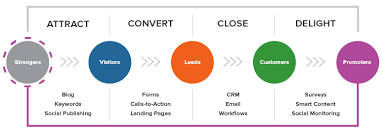
What is a Sales Funnel?
A sales funnel is a process a potential customer goes through before purchasing. It visually represents the customer journey, from awareness to purchase. It is also known as a marketing funnel, revenue funnel, or purchase. A defined sales funnel, and companies use it to understand the different stages of a customer’s decision-making process.
Understanding the Sales Funnel: The sales funnel consists of four stages: Awareness, Interest, Decision, and Action.
Awareness: In this stage, the customer becomes aware of your brand or product. They may have encountered your website, social media, or an advertisement.
Interest: In this stage, the customer shows interest in your product. They may have visited your website or subscribed to your email list.
Decision: In this stage, the customer is considering whether or not to make a purchase. They may have added items to their cart, read reviews, or compared prices.
Action: In this stage, the customer decides to purchase or not. They may have completed the transaction or abandoned their cart.
Optimizing the Sales Funnel:
Understanding each stage’s high-quality sales funnel and identifying the areas that need improvement are essential to maximizing the sales funnel.
Awareness: To increase awareness, you can use social media, paid advertising, or content marketing to attract potential customers.
Interest: To maintain interest, you can use lead magnets, such as free trials or e-books, to capture customer information and nurture leads.
Decision: To encourage the decision-making process, you can use retargeting ads, personalized emails, or product recommendations to remind prospective customers of your product.
Action: To increase conversions, you can use urgency tactics, such as limited-time offers, or scarcity tactics, such as low-stock alerts, to motivate customers to purchase.
Conclusion: In conclusion, the entire sales funnel model is essential for businesses to understand customer decision-making. Companies can increase conversions and revenue by optimizing each stage of the funnel. However, it is necessary to remember that the sales funnel is not a one-size-fits-all solution, and each company’s sales model may require adjustments to fit their specific needs.
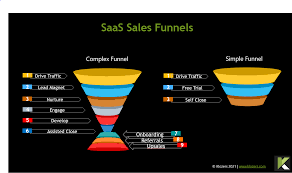
How to Build a Sales Funnel?
Building an entire sales pipeline and funnel can seem daunting at first, but it can be broken down into a few simple steps:
Define Your Customer Persona: The first step in building a sales funnel is to define your customer persona. This includes demographics, interests, pain points, and buying habits.
Create Awareness: Once you have defined your customer persona, you must create awareness about your brand or product. This can be done through various channels, such as social media, paid advertising, or content marketing.
Capture Leads: To capture leads, you must offer value to your potential customers. This could be a free trial, e-book, or newsletter.
Nurture Leads: Once you have captured leads, you must nurture them through decision-making. This can be done through personalized emails, retargeting ads, or product recommendations.
Close Sales: You must provide a seamless checkout process and offer incentives such as free shipping or a discount code to close sales.
Retain Customers: Once you have closed a sale, it is essential to retain your customers by providing exceptional customer service, personalized recommendations, or loyalty programs.
By following these steps, you can build an effective sales funnel that converts potential customers into loyal customers.
Sales Funnel Metrics: To measure the effectiveness of your sales funnel, you need to track specific metrics such as:
Conversion Rate: The percentage of leads that convert into customers.
Customer Acquisition Cost: The cost of acquiring a new customer.
Customer Lifetime Value: The total revenue a customer generates over their lifetime.
Sales Velocity: The speed at which a customer moves through the sales funnel.
By tracking these metrics, you can identify areas of improvement and optimize your sales funnel for maximum results.
Conclusion: The sales funnel is crucial to any business’s marketing strategy. By understanding the customer journey and optimizing each stage of the funnel, companies can increase conversions, revenue, and customer loyalty. Remember to track your metrics and adjust your sales funnel to stay ahead of the competition.
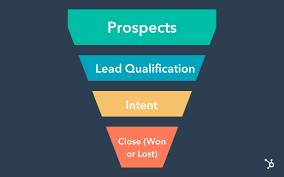
Why Are Sales Funnels Important? Sales funnels are important for several reasons. First, they provide a clear path for potential customers to move through the buying process. This helps businesses to identify where potential customers are dropping out of the funnel and make changes to the sales funnel to help improve conversion rates.
Second, sales funnels help businesses to target their sales and marketing efforts to the right people at the right time. Companies can tailor their messaging and offer to meet their needs by understanding where potential customers are in the funnel.
Finally, sales funnels help businesses to increase revenue and customer loyalty. By nurturing leads through the middle of the funnel and providing exceptional customer service, companies can create a positive customer experience that leads to repeat purchases and referrals.
How to Optimize Your Sales Funnel?
Optimizing your sales funnel involves analyzing each stage of the sales funnel important and making changes to improve conversion rates.
Here are some tips for optimizing your sales funnel:
Define Your Customer Persona: Ensure you understand your ideal customer and their needs clearly.
Improve Your Awareness: Use paid and organic channels to increase brand awareness and attract potential customers.
Offer Something of Value: Create a lead magnet that provides value to potential customers and encourages them to enter the top of the funnel.
Nurture Your Leads: Use personalized emails, retargeting ads, and product recommendations to guide potential customers through decision-making.
Streamline Your Checkout Process: Make sure your checkout process is simple and seamless to reduce the risk of cart abandonment.
Provide Exceptional Customer Service: Make sure your customer service or sales team is responsive and helpful, and consider offering incentives to encourage repeat purchases.
Following these tips and monitoring your metrics can optimize your sales funnel for maximum results.
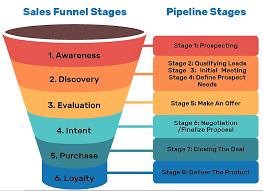
How to Build an Effective Sales Funnel for Your Business
Introduction: Sales funnels are essential for any business to convert potential customers into actual buyers. However, creating an effective sales funnel can be challenging, as it involves several steps and strategies. This article will guide you through building a sales funnel that can help you generate leads, increase sales, and grow your business.
Understanding the Sales Funnel: Before we dive into the steps involved in building a sales funnel, it’s essential to understand what it is and how it works. A sales funnel visualizes the customer journey, starting from the awareness stage to purchasing. It comprises four steps: awareness, interest, decision, and action. At each stage, the goal is to engage and persuade the potential customer to move to the next step and eventually make a purchase.
Step 1: Define Your Target Audience: The first step in creating an effective sales funnel is identifying and defining your target audience. You must know your potential customer’s pain points, interests, and buying behavior. This information will help you create targeted marketing campaigns and tailor your messaging to their needs.
Step 2: Create Awareness: The next step is to create awareness about your business and your products or services. This can be done through various marketing channels such as social media, content marketing, email marketing, and paid advertising. The goal is to attract potential customers and make them aware of your brand and offerings.
Step 3: Build Interest: Once you have created awareness, the next step is to build interest in your products or services. This can be achieved by providing valuable content, such as blog posts, e-books, webinars, and videos that educate and inform your potential customers. You can also offer free trials or demos to allow them to experience your product or service.
Step 4: Encourage Decision: You must encourage your potential customers to purchase at this stage. You can offer incentives such as discounts, limited-time offers, or free shipping to persuade them to take action. You can also use testimonials, reviews, and case studies to build trust and credibility.
Step 5: Retain Customers: The final step is to retain and keep your customers returning. This can be done by providing excellent customer service, offering loyalty programs, and regularly engaging with them through newsletters, social media, and other channels.
Conclusion: Creating an effective sales funnel is critical for the success of any business. By following these steps and strategies, you can build a sales funnel that can help you generate leads, increase sales, and grow your business. Remember to track your sales funnel examples and results and adjust your sales funnel for better performance.
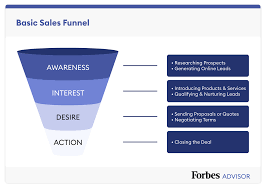
Tips for Optimizing Your Sales Funnel:
Now that we have discussed the steps involved in building a good sales funnel here, here are some tips for optimizing your sales funnel for better results:
Analyze your data: Use analytics tools to track visitors’ behavior and identify bottlenecks in your sales funnel. This can help you make necessary adjustments and optimize the bottom of the tunnel for better conversion rates.
Provide personalized content: Tailor your messaging and content to your potential customer’s specific needs and interests. This can help you build a stronger relationship with them and increase the chances of making a sale.
Use multiple channels: Utilize various marketing channels such as social media, email marketing, and paid advertising to reach a broader audience and increase your chances of converting potential customers into buyers.
Test and refine: Continuously test and refine your sales funnel to improve its performance. Experiment with different messaging, offers, and incentives to see what works best for your target audience.
In conclusion, building an effective sales funnel requires a deep understanding of your target audience, their pain points, and their buying behavior. By following the steps and tips discussed in this article, you can create a sales funnel that can help you generate leads, increase sales, and grow your business. Remember to track your results and adjust your sales funnel template for better performance.

The Importance of Sales Funnels:
Now that we have discussed the steps in building a successful sales funnel let’s talk about why sales funnels are essential for businesses of all sizes.
Efficient use of resources: By focusing on qualified leads more likely to convert, you can maximize your marketing and sales resources, resulting in better ROI.
Better customer experience: Sales funnels provide a seamless and personalized experience for potential customers, which can help build trust and increase the likelihood of making a sale.
Data-driven insights: Sales funnels provide valuable customer behavior and preferences data, allowing you to make informed decisions and optimize your sales process for better results.
Increased revenue: A well-designed sales funnel can help you generate more leads and convert them into paying customers, resulting in increased revenue and growth for your business.
In summary, sales funnels are a powerful tool for businesses looking to generate more leads, increase sales, and grow their customer base. You can achieve better results and drive business success by understanding your target audience, creating personalized content, and optimizing your sales funnel.
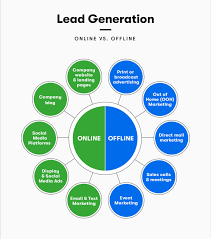
Common Sales Funnel Mistakes to Avoid:
While sales funnels can be an effective tool for generating leads and increasing sales, there are also some common mistakes that businesses should avoid when building and implementing their sales funnel. These include:
Lack of customer research: Without a deep understanding of your target audience’s pain points and buying behavior, it isn’t easy creating a sales funnel that resonates with potential customers is problematic.
Complex or confusing sales funnel leads to structure: A sales funnel that is too complicated to navigate can turn potential customers away, resulting in lower conversion rates.
Poor messaging and content: Your messaging and content should be tailored to your target audience and provide clear value propositions that address their needs.
Not optimizing for mobile: With more and more consumers using mobile devices to browse and shop online, your sales must be optimized for mobile devices to provide a seamless user experience.
By avoiding these common mistakes and focusing on building a sales funnel tailored to your target audience and optimized for better conversion rates, you can maximize the potential of your sales funnel and achieve better results for your business.
Conclusion:
In conclusion, sales funnels are critical for businesses looking to generate leads, increase sales, and grow their customer base. You can achieve better results and drive business success by understanding your target audience, creating personalized content, and optimizing your sales funnel. Remember to avoid common mistakes and focus on providing a seamless and customized user experience to maximize the potential of your sales funnel.
CoopBusiness is a revolutionary cooperative business-building platform that empowers individuals to become entrepreneurs, business owners, and financially independent.
As a member, you’ll receive top-level business mentorship, access to our proprietary business systems, and the opportunity to access the funds you want to turn your business ideas into reality.